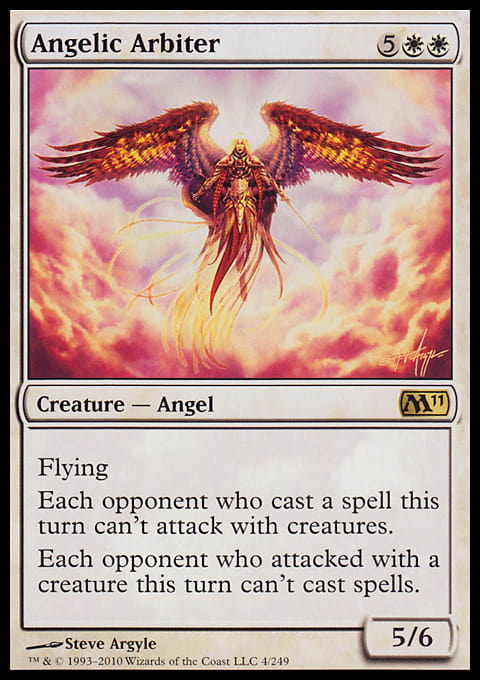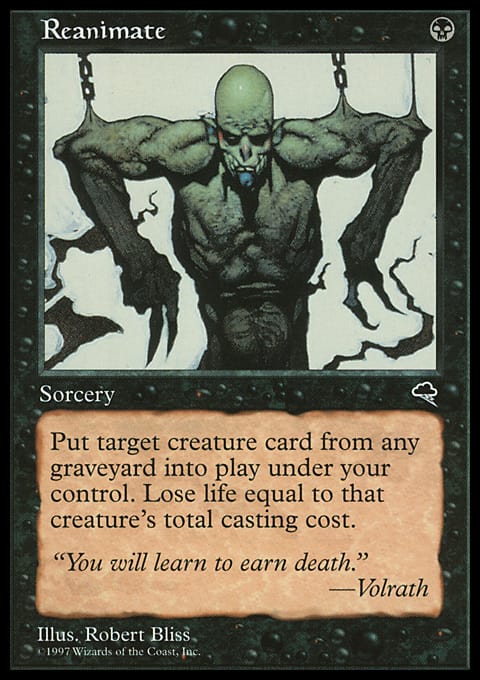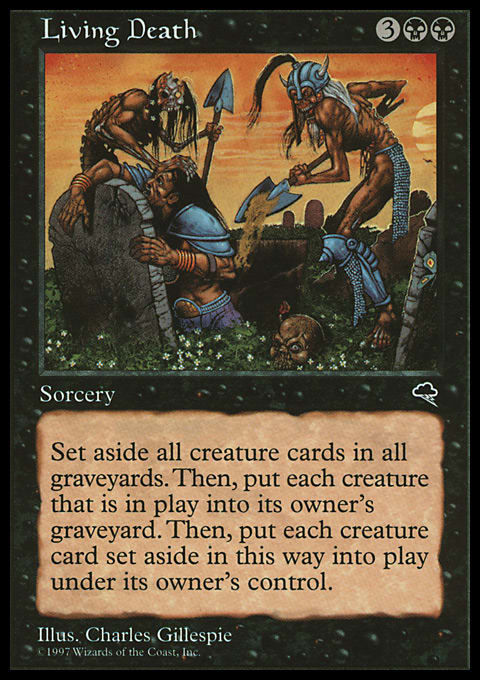Another new year is upon us. The champagne will be poured, “Auld Lang Syne” will be sung,” and the ball will drop in Times Square. The New Year is a time for making resolutions, going on diets, and setting goals.
As a lover of casual formats, the New Year holds not only weight-loss and exercise resolutions, but also new opportunities to bend and warp the multiverse of Magic. One of my favorite ways to find new ways to play is to test the limits of my Cube. (See my Cube on Deckbox.org.) Revamping one’s Cube is also a great way to express our individual creativity and any pet passions we have within the game. (For example, one of my pet passions would be five-color Elemental decks.)
Here are some ideas for Cube drafting I’ve come up with for 2013:
1 – Build a Multiplayer Sideboard for Your Cube
On Deckbox.org I’ve built a multiplayer sideboard for my Cube. It’s a list of solid multiplayer cards that could be swapped into my Cube if I know for sure that I’ll be playing multiplayer games.
You might be thinking, but aren’t most Cube drafts multiplayer?
In a perfect world, yes. But more often than not, I can only get together with just one other Magic player and not a whole group. I assume this happens to you, too. The high school and college experience of Magic is great—you can pull together a group of players without much effort. But in the after-college world of marriage, parenting, full-time jobs, and other things, it becomes more difficult to pull together a group game night. Having a sideboard ready-made means I can alter my Cube quickly and not waste precious time when multiple friends are actually gathered for some Magic.
Here are a few suggestions of swaps I would make. I tried to retain either the same effect or the same mana cost of each card.
| Out | In | Notes |
| Serra Angel | Angelic Arbiter | Though the mana cost is different for these two cards, the multiplayer implications of Angelic Arbiter are far greater than those of Serra Angel. |
| Phantasmal Bear | Telepathy | The multiplayer implications for this card are obvious. Flavorfully, I think it also simulates what it would be like to play Magic with Professor X. |
| Tribute to Hunger | Syphon Soul | These two cards have similar effects, but one is much more exciting to draft when facing multiple players. |
| Traitorous Blood | Mass Mutiny | Mass Mutiny has a mana cost that’s much too high for most Draft duels. In multiplayer, however, this card really shines. |
| Pride of Lions | Hydra Omnivore | Similar effects and similar mana costs, but one is much more devastating in multiplayer. |
These are just five examples; think about what it would look like if you had a list of twenty-five or fifty premade? With a prebuilt multiplayer sideboard, you can quickly alter your Cube to be ramped up for multiplayer interactions or fine-tuned to dueling one-on-one.
2 – Build a Fat Stack Sideboard for your Cube
If you’re not familiar with the Fat Stack, variant you can read about it listed as an alternative format on MagicTheGathering.com. I first learned about the variant via Adam Stybs’s article here. The Reader’s Digest version of this variant is: Players share two libraries, one containing only mana and one containing everything else. A player may choose from which library he draws whenever he draws a card. Players also share a single graveyard. The graveyard isn’t reshuffled into the library after each game.
In Fat Stack, graveyard-matters cards really shine. Since players share a graveyard, any cards with flashback or some other graveyard bonus (e.g. dredge, scavenge, etc.) are open to all players. Reanimator cards such as Diabolic Servitude and (the aptly named) Reanimate are also coveted, as each player is actively filling up the ’yard. The ability to exile cards from graveyards is also especially good in this variant, but it must be played with cautiously. Purify the Grave might be saving you from a reanimated Ulamog's Crusher, but it’s also removing any chance you have at getting the Crusher for yourself. And Bojuka Bog is an absolute atom bomb in this format.
Here are some suggestions of substitutions I would make:
| Out | In | Notes |
| Pacifism | Journey to Nowhere | |
| White Knight | Valor | Be careful with this one—all players will get the bonus on their turns! |
| Inspiration | Deep Analysis | |
| Aeon Chronicler | Havengul Runebinder | Remove your opponents’ resources and build your army. |
| Nightscape Familiar | Reassembling Skeleton | Careful! You won’t be the only one who can cast it. |
| Tendrils of Corruption | Haunting Misery | Here’s a convenient way to remove your opponents’ resources, but you’ll also be removing your own! |
| Shatter | Ancient Grudge | |
| Shock | Firebolt | |
| Rampant Growth | Grisly Salvage | |
| Cultivate | Mulch | Mulch and Grisly Salvage can be good for all players in the game—sort of like mini versions of Gate to the Aether. |
| Giant Growth | Forgotten Harvest | During Fat Stack games, I think it’s best to play with the old rules about the graveyard: Cards in the graveyard are kept in the order in which they entered the graveyard. The graveyard cannot be rearranged unless a card grants that ability. Playing with this old rule makes cards like Forgotten Harvest and Haunting Misery more strategically challenging (and more fun!). |
By building a Fat Stack sideboard, you can quickly swap in the right cards and have a whole new experience playing your Cube without going through all the time required to actually build a new Cube just for the Fat Stack variant. You’ll undoubtedly find cards that virtually break the format (Living Death comes to mind), and as I know of no official banned list for this variant, it will be up to you and your playgroup to decide if you allow them into the Cube. You can see my list of Fat Stack subs on Deckbox.org.
One aside about the Fat Stack format: I’ve found that Fat Stack is a great format to use with new players. It’s really easy to explain and quick to play. Most importantly, it allows new players to experience a Cube (and all of the overpowered treasures within) without having to learn to draft a deck first.
3 – Do a Commander Draft
In addition to Cube drafting, Commander is easily one of the best casual formats in Magic. However, when I have my Cube constructed, it’s hard for me to play any Commander games because all of my best cards are in the Cube.
That’s when a friend and I created a way to mix Commander and Cube Draft. Here’s how it works:
- Pull all of the commanders out of your Cube.
- Draft just the commanders. How you draft them is up to you. It may depend on how many commanders you have and how many players are at the table. In the Cube I play, there are nearly thirty commanders available. When I draft Commander with just one other person, I’ll deal each of us ten commander cards face-down and put the rest aside, face-down. Then, we do a quick Solomon Draft. In between each round of picks, each player takes one card off the top of his face-down pile. The draft goes quickly (which is good), yet it provides you with enough knowledge of what the other person is playing that you can try to hose the player, though it doesn’t give you full knowledge of everything the player has.
- Deal out four to five booster packs from the remaining Cube (excess commanders are still set aside), and draft your decks.
- Assemble sixty-card Commander decks, and go!
Each time I’ve played this format, I’ve been blown away by how fun it is. It’s the perfect blend of my two favorite casual formats: Cube Draft and Commander. My playgroup has found that drafting four or five boosters is usually plenty of cards for creating sixty-card decks. We play with 40 life even though our decks are smaller, and it hasn’t affected game play.
I highly recommend trying something like this with your Cube this year. It opens up the Commander format to you without requiring you to deconstruct your Cube or pull cards out of it. It also may start your creative juices flowing about new commanders to swap into your card list. Here’s a list of the commanders included in the overpowered Cube I play with:
- Olivia Voldaren
- Sedris, the Traitor King
- Rith, the Awakener
- Thraximundar
- Teneb, the Harvester
- Damia, Sage of Stone
- Kresh the Bloodbraided
- Numot, the Devastator
4 – Build a Checklist of New Drafts and Casual Formats, then Start Working through the List
One of the best ways to discover strengths and weaknesses in your Cube is to use it in various formats. To date, I’ve attempted all of these Drafts and formats with my Cube:- Mini-Master (Pack Wars)
- Solomon Draft
- Seven (This link takes you to where I learned about this format: an article by Michael Hetrick at MTGOAcademy.)
- Winston Draft
- Winchester Draft
- Planechase
- Commander/EDH
- Fat Stack
To date, I’ve not attempted these formats with my Cube. What do you think I’ll be doing in 2013?
- Mental Magic
- Emperor
- Vanguard (If I can get my hands on some of the cards of course.)
- Archenemy (Everyone drafts a deck, an archenemy is chosen at random or by the method of your choosing, Archenemy cards are either drafted or randomly chosen, and go!)
End Step
As I said at the beginning of this article, each new year holds new opportunities for the Magic player. If you’re interested in stretching the limits of your Cube beyond the regular Draft scenarios, I encourage you to give one of these ideas a try. I’d love to hear about your experiences in the comments section below.
What will you do in 2013 to warp the multiverse?

























